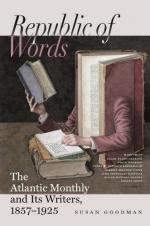That Mirabella is linked in wedlock to this angry Fool is nowhere more clearly depicted than in the passage where Prince Arthur, having come to her rescue, is preparing to put her tormentor to death, until his sword is arrested by the shrieks and entreaties of the unhappy lady that his life may be spared for her sake:—
“Stay, stay, Sir Knight! for love
of God abstain
From that unwares you weetlesse do intend!
Slay not that carle, though worthy to
be slain;
For more on him doth than himself depend:
My life will by his death have lamentable
end.”
This is the language of a virtuous wife, whom neither the absurdities of a vainglorious husband, nor “the whips and scorns of the time,” to which his conduct necessarily exposes her, can detach from her duties and affections.
Assuming, then, that the circumstances of this allegory identify Mirabella with Rosalinde, and Rosalinde with Rose Daniel, and, in like manner, the Fool and Carle with Menalcas and John Florio, have we not here a thrice-told tale, agreeing so completely in all essential particulars as to leave no room for doubt of its original application to the early love-adventures in which the poet was disappointed? And these points settled, though intrinsically of trivial value, become of the highest interest, as strong corroboration of the personal import of all the allegorical characters introduced into the works of Spenser. Thus, in the “Shepherd’s Calendar,” the confidant of the lover is Hobbinoll, or Gabriel Harvey; and in the “Faery Queen,” the adventurers who come to Mirabella’s relief are Prince Arthur, Sir Timias, and Serena, the well-known allegorical impersonations of Spenser’s special friends, the Earl of Leicester, Sir Walter Raleigh, and Elizabeth Throckmorton, to whom Sir Walter was married. Are not these considerations, added to the several circumstances and coincidences already detailed, conclusive of the personal and domestic nature of the history conveyed in both the poetical vehicles? And do they not amount to a moral demonstration, that, in assigning the character and adventures of Mirabella and Rosalinde to the sister of Samuel Daniel, the wife of John Florio, we have given no unfaithful account of the first fickle mistress of Edmund Spenser?—We shall next ascertain the name and history of his wife from the internal evidence left behind him in his works.
PART II.—SPENSER’S WIFE.
The second passion of our poet, having had birth
“In savage soyle, far from Parnasso Mount,”
is more barren of literary gossip and adventure, and may, therefore, we trust, be compressed into narrow limits.
The chief evidence on which we shall have to rely in this case must be of a similar nature with the former;—not that we shall have to interpret allegories, but the true reading of an anagram; for we may set out on our pursuit, assured, that, according to the poetical alchemy of his age, Spenser did not fail to screen his second innamorata under the same “quintessential cloud of wit” as his first; and that we shall find in his homage some sobriquet, “the right ordering of which” (as in the former case) “will bewray the verie name of his love and mistresse.”




